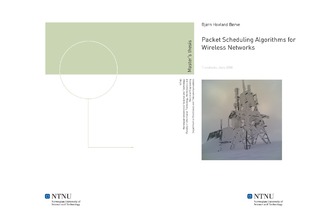Packet Scheduling Algorithms for Wireless Networks
Master thesis
Permanent lenke
http://hdl.handle.net/11250/2369376Utgivelsesdato
2008Metadata
Vis full innførselSamlinger
Sammendrag
The evolution of services offered using communication technology has yielded a jungle of different services. Many of these services exhibits different QoS requirements; different requirements to delay, probability of packet-loss and throughput. Effectively this means they require different amounts of resources when handled in a network node. This thesis covers descriptions and simulations of four different scheduling algorithms deployed in a high-speed point-to-point radio-link scenario. The different algorithms examined in this thesis are the conventional First-In-First-Out (FIFO) algorithm, the Strict Priority (SP) queuing algorithm, the Deficit Round-Robin (DRR) algorithm and finally the Deficit Weighted Round-Robin (DWRR) algorithm. Theoretical presentations of each of the algorithms are followed by simulations which exhibits the characteristics of the different algorithms. Two of the mentioned algorithms (FIFO, DRR) does not offer capabilities of differentiation between different classified data-flows, while the two remaining algorithms (SP, DWRR) does. The simulations illustrates the advantages of deployment of scheduling algorithms capable of differentiating resource allocation with respect to the different QoS requirements of multiple data-flows. The simulation results reveals that when deployed in a high-speed point-to-point link, where low complexity is emphasized, the DWRR algorithm offers the most promising performances of the examined algorithms.
